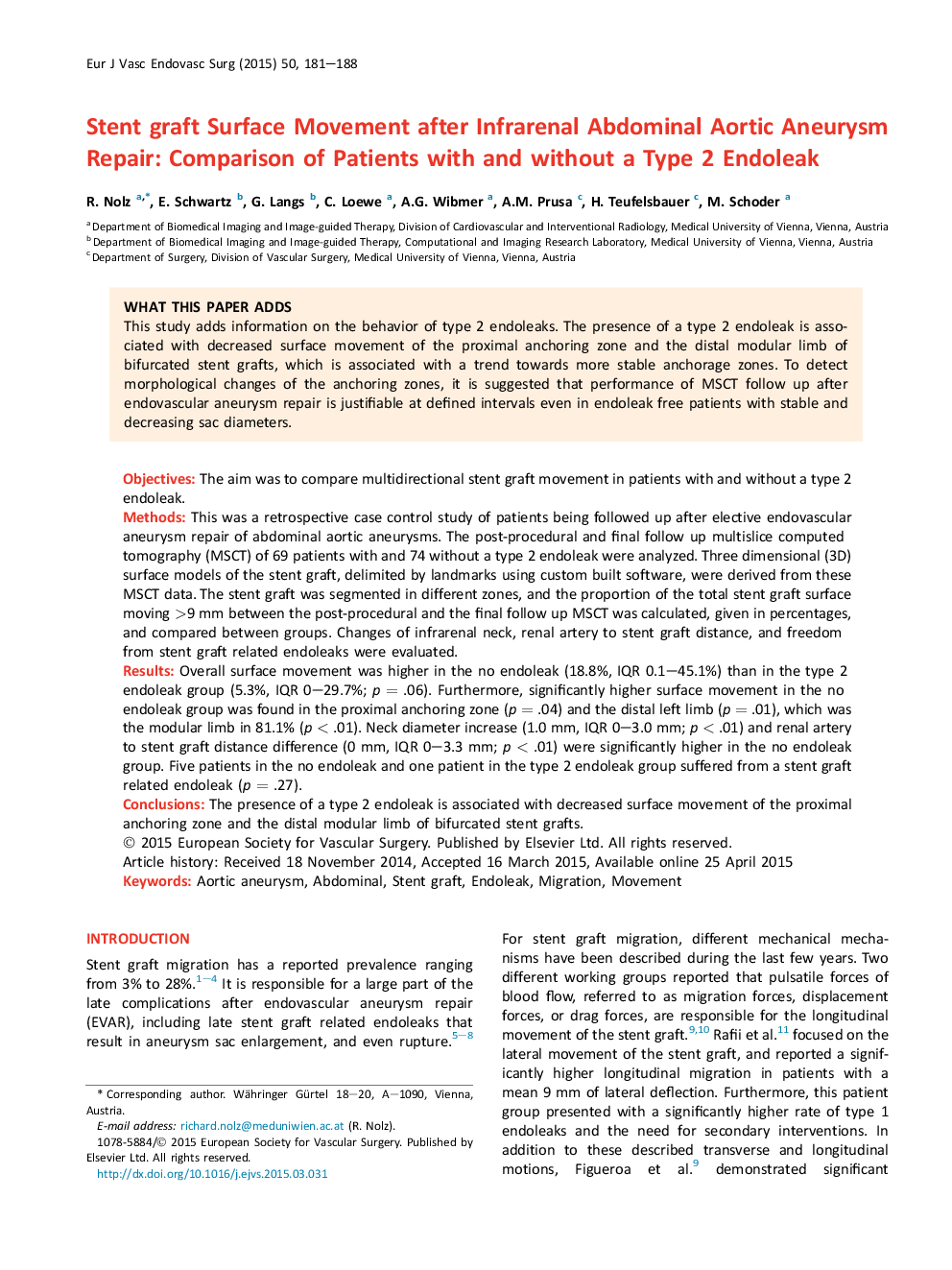| Article ID | Journal | Published Year | Pages | File Type |
|---|---|---|---|---|
| 2911822 | European Journal of Vascular and Endovascular Surgery | 2015 | 8 Pages |
ObjectivesThe aim was to compare multidirectional stent graft movement in patients with and without a type 2 endoleak.MethodsThis was a retrospective case control study of patients being followed up after elective endovascular aneurysm repair of abdominal aortic aneurysms. The post-procedural and final follow up multislice computed tomography (MSCT) of 69 patients with and 74 without a type 2 endoleak were analyzed. Three dimensional (3D) surface models of the stent graft, delimited by landmarks using custom built software, were derived from these MSCT data. The stent graft was segmented in different zones, and the proportion of the total stent graft surface moving >9 mm between the post-procedural and the final follow up MSCT was calculated, given in percentages, and compared between groups. Changes of infrarenal neck, renal artery to stent graft distance, and freedom from stent graft related endoleaks were evaluated.ResultsOverall surface movement was higher in the no endoleak (18.8%, IQR 0.1–45.1%) than in the type 2 endoleak group (5.3%, IQR 0–29.7%; p = .06). Furthermore, significantly higher surface movement in the no endoleak group was found in the proximal anchoring zone (p = .04) and the distal left limb (p = .01), which was the modular limb in 81.1% (p < .01). Neck diameter increase (1.0 mm, IQR 0–3.0 mm; p < .01) and renal artery to stent graft distance difference (0 mm, IQR 0–3.3 mm; p < .01) were significantly higher in the no endoleak group. Five patients in the no endoleak and one patient in the type 2 endoleak group suffered from a stent graft related endoleak (p = .27).ConclusionsThe presence of a type 2 endoleak is associated with decreased surface movement of the proximal anchoring zone and the distal modular limb of bifurcated stent grafts.
